Two particles A and B are revolving with constant angular velocity on two concentric circles of radius 1m and 2m respectively as shown in figure. The positions of the particles at t = 0 are shown in figure. The positions of the particles at t=0 are shown in figure. if mA=2kg,mB=1kg and →PA and →PB are linear momentum of the particle then what is the maximum value of ∣∣→PA+→PB∣∣ in kg-m/sec in subsequent motion of two particles.
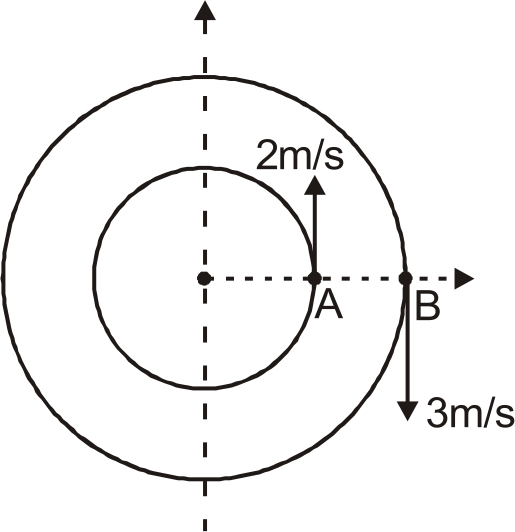
Video Solution
Text Solution
Since angular velocities of the particles are different, after some time, two particle may move parallel. In such case ∣∣→PA+→PB∣∣ is maximum
∣∣→PA+→PB∣∣max=(2×2+1×3)kgm/s=7kgm/s
|
Similar Questions
Knowledge Check
A particle P is moving along a straight line as shown in the figure. During the motion of the particle from A to B the angular momentum of the particle about O
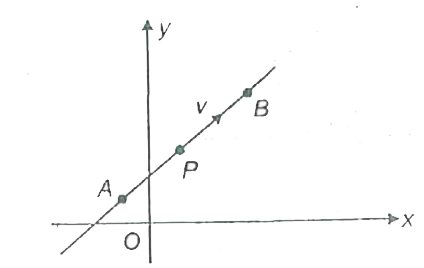 AIncreasesBDecreasesCRemains constantDFirst increases and then decreases
AIncreasesBDecreasesCRemains constantDFirst increases and then decreasesTwo particle A and B are moving as shown in the figure
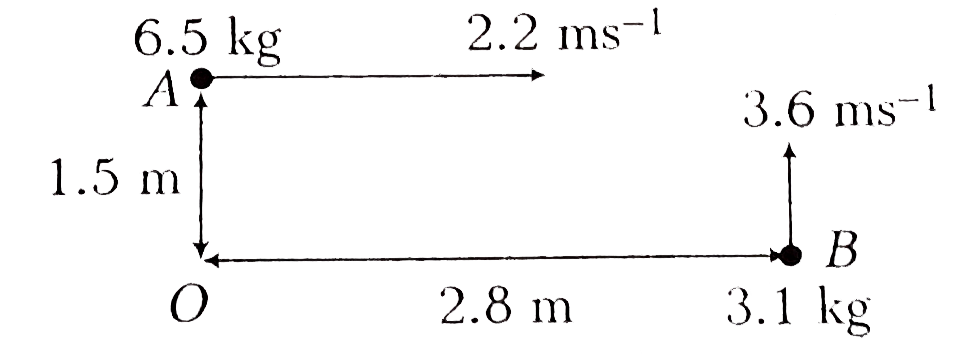
Their total angular momentum about the point O isA9.8kgm2s−1BzeroC52.7kgm2s−1D37.9kgm2s−1Two particles A and B are moving as shown in the figure. Their total angular momentum about the point O is
 A9.8kgm2/sBzeroC52.7kgm2/sD37.9kgm2/s
A9.8kgm2/sBzeroC52.7kgm2/sD37.9kgm2/s
Two particle of mass 4 kg & 2kg are located as shown in figure then find out the position of centre of mass.
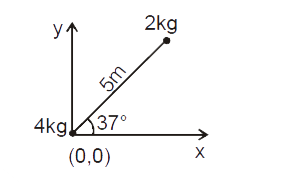
View SolutionTwo particles A and B are moving , as shown in the figure .
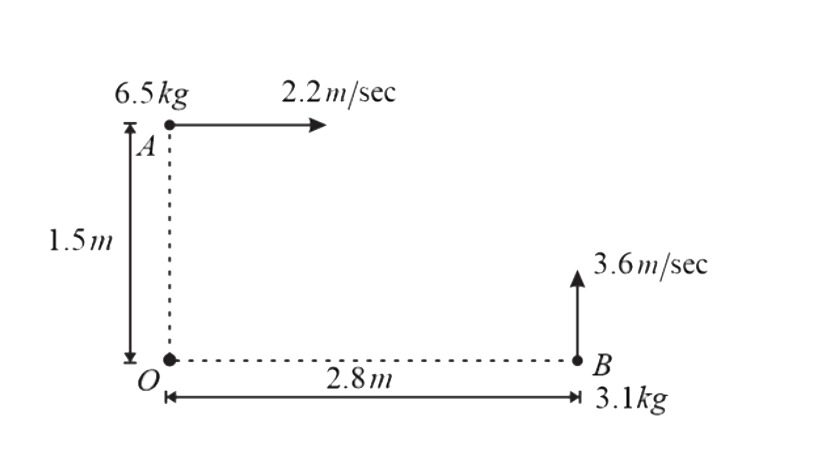
Their total angular momentum about the point O is
View SolutionThe position-time graph of a particle of mass 0.1 kg is shown. The impulse at t = 2s is :
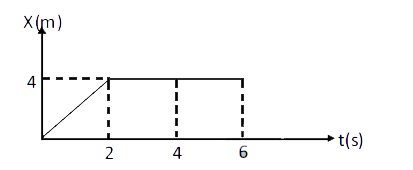
View SolutionTwo particles A,B are moving on two concentric circles of radii R1) and R2 with equal angular speed ω. Att=0,their positions and direction fo motion are shown in the figure :
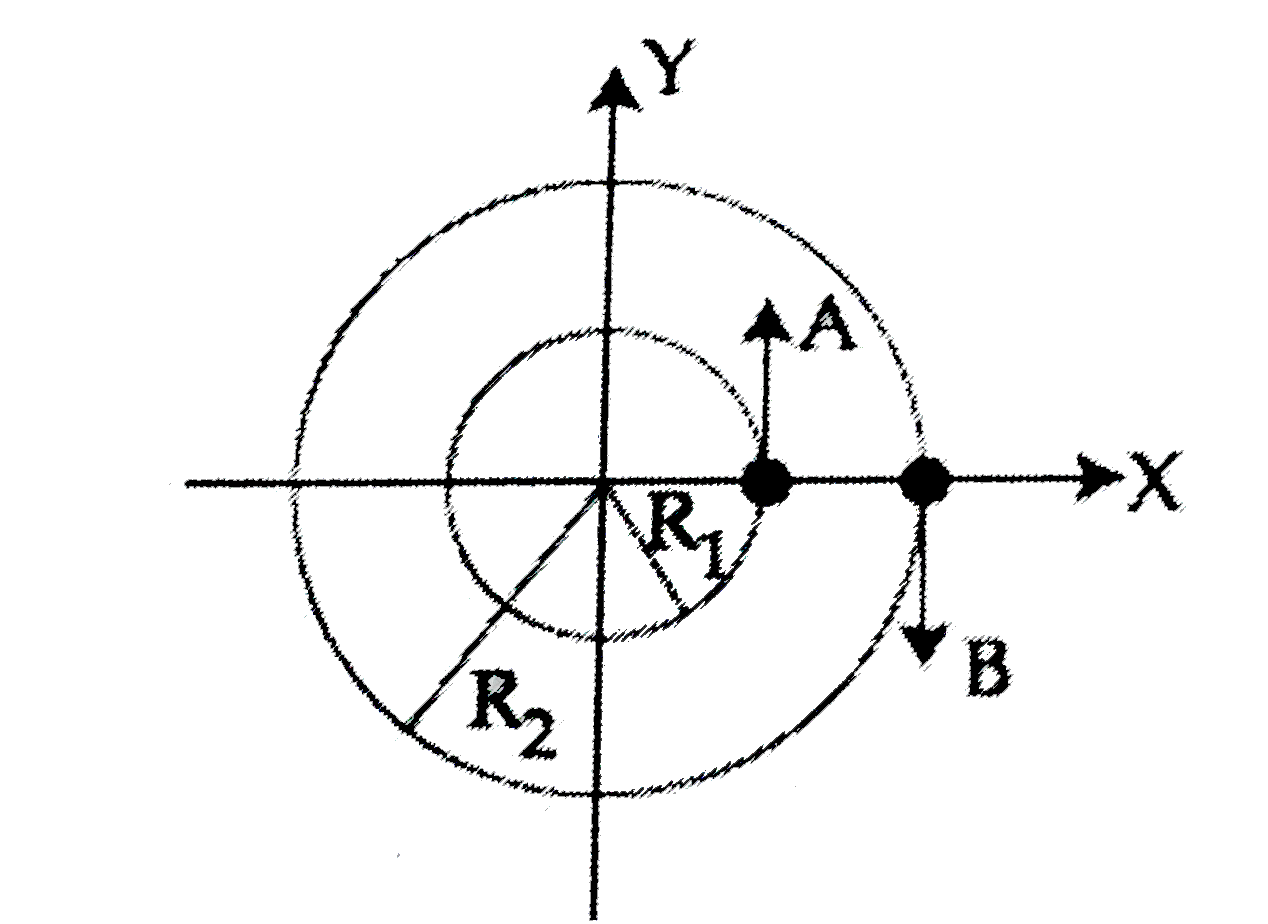
View SolutionTwo particles A,B are moving on two concentric circles of radii R1) and R2 with equal angular speed ω. Att=0,their positions and direction fo motion are shown in the figure :

View Solution

